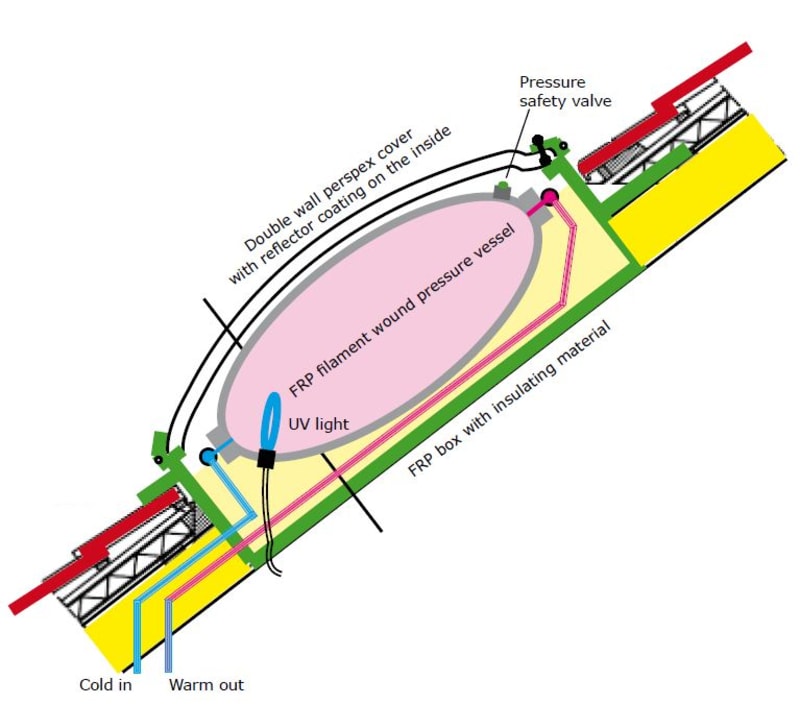Product proposal for “Solar Kettle”
INTRODUCTION
There is a worldwide search for innovative technologies to reduce CO2 emissions.
One option to reduce CO2 emissions is to cut down on the use of fossil fuels to heat water for domestic use.
The sun is an endless source of energy. This energy can be captured and be used to heat liquids, such as water for domestic use for shower, bath, washing machine and dishwasher.
Well-known solar water heating systems are in place to heat pools and outside showers with flat plate collectors. Also wide spread nowadays are closed loop collector systems, whereby a flat plate collector is placed on roofs, in combination with a heat exchange coil in a separate pressure water tank. These are always low-pressure systems fed by a pump. This type of system is expensive and usually takes up a lot of space.
The reason for separating the heat exchange liquid from the mains water system is twofold. One is that a flat plate collector cannot take the mains pressure, which usually is about 3 bar (ato) with surge pressures up to 4 bar. A flat plate collector cannot take these pressures and will burst. A second argument for a separate liquid loop is that a special liquid can be used to avoid freezing of the system in wintertime.
The Solar Kettle combines the collector and storage vessel in one unit, thereby achieving a number of specific advantages:
•Lower investment of the system (About 1/3 of the closed loop system)
•ROI period shorter therefore.
•No pump needed.
•Less space taken by the system because it is integrated in the roof.
•Visual appearance is more attractive (looks more like a window)
•Capacity 120 litres should be enough for 24 minutes showering
COMPOSITE TECHNOLOGY ASPECTS
The Solar Kettle can be produced on automatic filament winding machines, much like the FRP butane/propane bottles used for liquid gas storage. The secret of solar heat collection is related to the introduction of a heat conveying aluminium metal powder additive to the resin mix.
The maximum radiation heat absorption is optimized by the introduction of a special and recently developed nano-black coating to the topside of the FRP vessel.
The box in which the vessel is contained is made by automatic production method with a close mould technology.
MARKET POTENTIAL
The Solar Kettle has a tremendous market potential. About 50% of the 500 million private dwellings in the Northern Hemisphere (North America and Europe) have tile-covered roofs (=250 M). Assume that 1% of this number qualify for this system, then the market potential is 2.5 M dwellings = Solar Kettle units.
Production cost is estimated at $ 800,- and sales price at $ 1,200,- - $ 1,600,- depending on market channel.
Like this entry?
-
About the Entrant
- Name:Jacob Ketel
- Type of entry:individual
- Patent status:none





